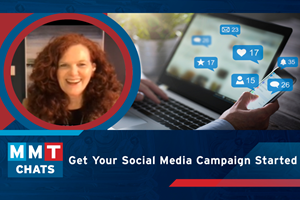Executive Decision Making in a Customer-Centric Org, Part 3
Understanding the importance of innovation, competition and your own organization’s strengths and weaknesses in formulating then executing capably on your strategy.
It will be nearly impossible to compete on price alone as an American supplier. As such you must have something else in your strategy that will allow you to differentiate yourself from the competition. That “something else” must fall into the broad category of innovation, and the good news is can be planned and developed within your business, based on your strategy. The following are some of the challenges that affect competitive capability in our business.
Our Challenges
Labor: We have a huge disadvantage in labor costs and as you know, the trend is for tooling business to shift even from region to region based on labor costs.
Automation: We need to get really good at automating to offset the labor disparity, but it won’t solve the problem as the competition will automate too. That said, as the tool manufacturing business shifts geographically and more machining equipment is sold into various regions, where do you think the machine tool industry will focus and place its R&D investment? This is not to say that a supplier won’t see your company as a unique partner, quite worthy of working with to develop and improve automation concepts, but in general it is likely to happen closer to where their volume sales occur. This is another reason we want the USA to get back in the game as a powerhouse in tool manufacturing.
Shipping and Tariffs: These are one-time costs that don’t really change the equation much. Without more protectionism in support of our national interests, tariffs are not likely to be a game changer.
Production/Operations Costs: Some have suggested that the U.S. is close to parity with offshore manufacturers in facility and energy costs. What about environmental management costs, material costs, labor compliance costs and the possibility of subsidies the competition may receive? We are likely at some disadvantage against developing regions.
Quality: Competing on quality is very useful and enters into the category of planned innovation. Quality won’t happen overnight, or by decree from top management. It has to be embedded in the business process. Offshore tooling manufacturing quality will continue to climb to world-class over time, just as Japan Inc. famously achieved manufacturing quality superiority over roughly a 40-year period. I predict quality will climb faster than ever before due to the global nature of markets and new enabling information and communication technologies, which will accelerate training and learning.
Impact of Government Support of Business: How is it that our large U.S. companies are so profitable in the midst of this recession? The job growth they are driving is outside of the U.S. Tax structures also support this offshore investment. Their purchasing is increasingly of foreign-made services and products as a result of perceived value, largely predicated on cost. We must find a way to incentivize companies to manufacture in the USA.
National and state budget debates will eventually conclude that we must manufacture domestically to drive GDP and the tax base. More taxation now would simply drive business away so it is not an honest solution to our budget woes. It will take time to create new policy and make the requisite changes for our nation to be more business friendly. Such change will be hugely beneficial in the broader scheme, but for those of us currently managing businesses, we must find ways to become more competitive right now.
Decisions to Change the Game
I believe our only chance to regain a dominant position and drive employment in our sector is to consciously choose areas where we want to compete then develop a culture of innovation in targeted areas.
Places to Innovate: Solid VOC will save time and help our odds of success. Here are three examples of where a specific focus might be appropriate in our industry.
1. Innovation on design, manufacturability or in time-to-market (order fulfillment) may be most critical to your core customer base.
2. It may be that your customer base will respond to innovation in reliability and tool longevity. Innovation in the application of material science may strengthen your product in critical areas or reduce wear. A culture driving innovation in tool design and manufacture may allow you to guarantee tool life far longer than today’s top 1M cycle ratings.
3. Perhaps business model innovation is a driver for your customer. TCO or total cost of ownership is an important part of the equation for those that will take time to explore it. Perhaps the customers will value innovation in a business structure where you guarantee maintenance and repairs to some higher level of shots run, protecting their investment. You may be able to offer pre-set pricing on a refurbish program, to be done at an agreed upon number of cycles.
Execution Plans: Knowing what is important to your target market allows you to choose which areas to focus on in growing your specific culture of innovation. Next, it becomes very important to know your current organizational strengths and weaknesses. Use of classical quality tools like SWOT analysis (strengths, weaknesses, opportunities and threats) is a good way to wade into this. If you can’t do this honestly, find a customer who can join you in the discussion or find out what the competitors say about you, as it’s probably got some truth in it.
Whether you can get to where you want to go at reasonable cost and in reasonable time are also important as they affect your odds of success. Set timely goals for progress along the path and assure you are resourced for success.
Finally, ask the most reflective questions of all. Is the current management team up to the challenge? Do we have the right players on board to execute in the areas needed? Are they on board with the strategy and driven to succeed? Where do we ourselves get the knowledge to change the equation quickly? Do we have critical mass in the right areas? Would partnering with one or more other organizations make sense if we share strategic objectives, but cannot individually reach critical mass? How important is scale?
These types of questions open the door for new opportunities, advice and investment. Consider partnering with others as a way to get there faster and achieve critical mass. The old saying that “time is of the essence” is more important in today’s world of cycle time compression than ever before, and falling too far behind on the technical learning curve may be impossible to recover from.
Summary
Developing targeted areas of innovation that set you apart from the competition is the best way to create a long term-competitive advantage. It takes VOC discernment, reflection, execution and investment along with the ability to stay focused and measure progress along the way. By doing this we help ourselves and we strengthen our business community. Without it we become just another commodity supplier in the eyes of our customer, and we all know how far that is from the truth.
Related Content
The Role of Social Media in Manufacturing
Charles Daniels CFO of Wepco Plastics shares insights on the role of social media in manufacturing, how to improve the “business” side of a small mold shop and continually developing culture.
Read MoreMMT Chats: Simple Steps to Get Your Social Media Campaign Started
MoldMaking Technology Editorial Director Christina Fuges catches up with Gail Now’s Chief Curiosity Officer Gail Robertson. We talk about the importance of using the curiosity tool to tell your stories as part of a marketing strategy that includes social media. This episode is brought to you by ISCAR with New Ideas for Machining Intelligently.
Read MoreMMT Chats: Mold Builder Shares “Raw and Real” Social Media Strategy
MoldMaking Technology Editorial Director Christina Fuges sits down with Murphy Forsyth, GM – Injection Molding and Director Of Marketing for Zero Tolerance LLC in Clinton Township, MI.
Read MoreEditorial Guidelines: Editorial Advisory Board
The Editorial Advisory Board of MoldMaking Technology is made up of authorities with expertise within their respective business, industry, technology and profession. Their role is to advise on timely issues, trends, advances in the field, offer editorial thought and direction, review and comment on specific articles and generally act as a sounding board and a conscience for the publication.
Read MoreRead Next
Executive Decision Making in a Customer Centric Org, Part 2
We look at the remaining pitfalls that will dramatically limit an organization’s ability to stay on the curve relative to basic productivity as well as and to carve out a niche.
Read MoreReasons to Use Fiber Lasers for Mold Cleaning
Fiber lasers offer a simplicity, speed, control and portability, minimizing mold cleaning risks.
Read MoreAre You a Moldmaker Considering 3D Printing? Consider the 3D Printing Workshop at NPE2024
Presentations will cover 3D printing for mold tooling, material innovation, product development, bridge production and full-scale, high-volume additive manufacturing.
Read More


















